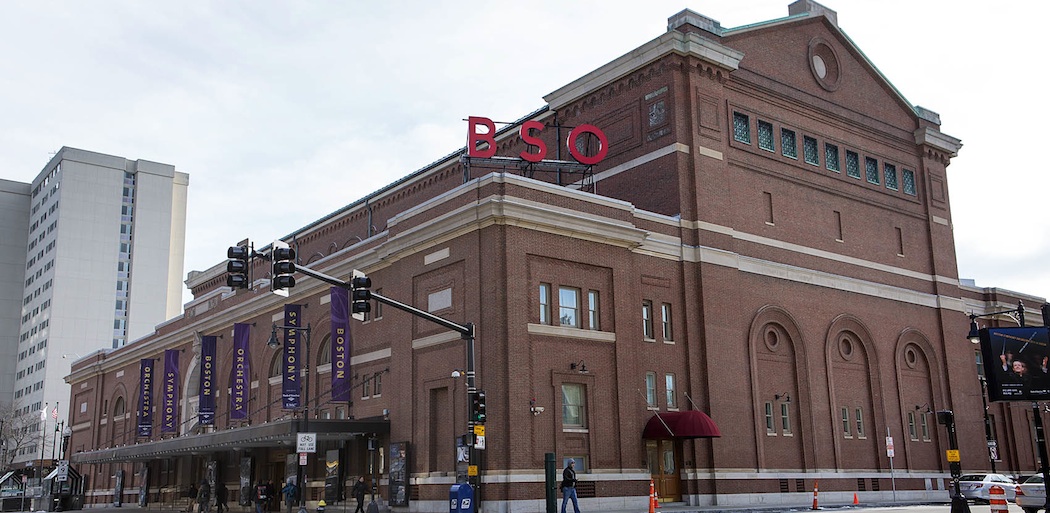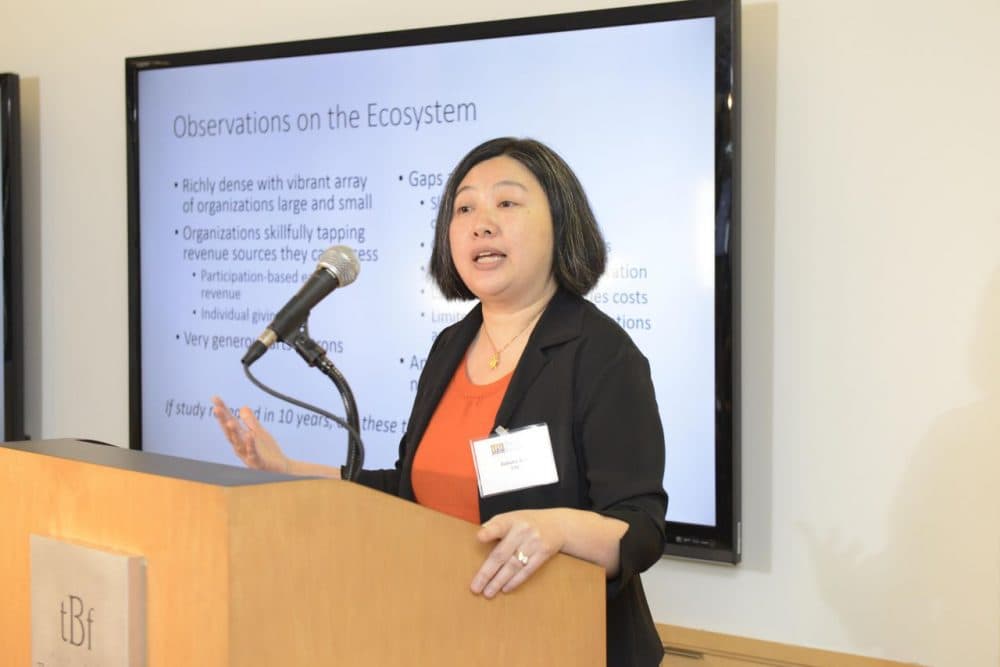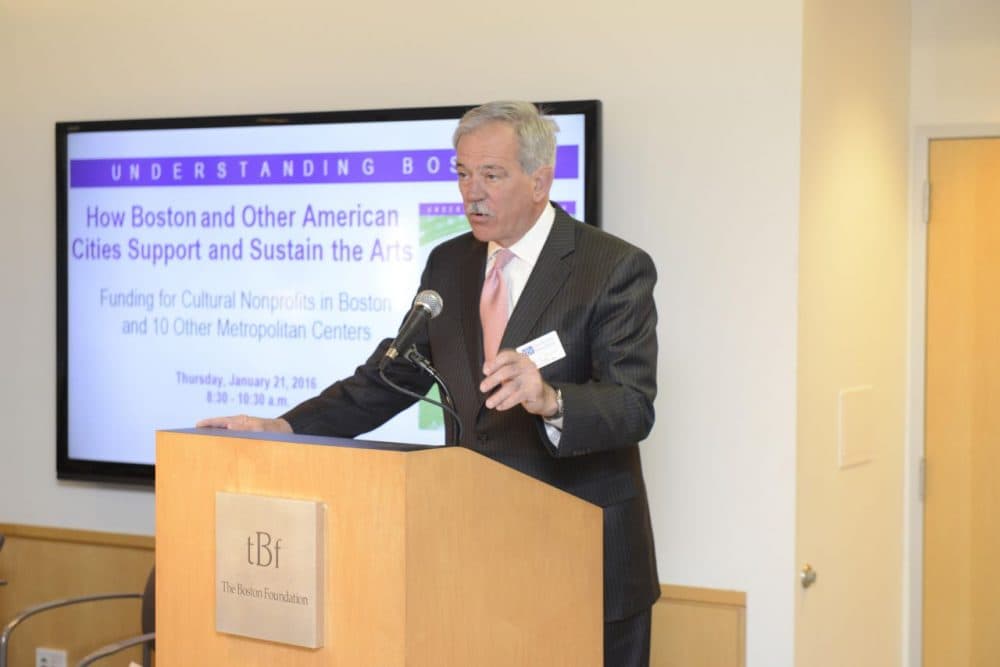Advertisement
Boston Arts Study: Individuals Are Generous; Corporations And Institutions Are Not

This city has long prided itself as the Athens of America, but when it comes to spending on the arts, a study released Thursday by the Boston Foundation suggests that we might want to refrain from patting ourselves on the back.
The foundation’s latest civic report — "How Boston and Other American Cities Support and Sustain the Arts" — is authored by TDC, a research and consulting firm for nonprofits. It compares spending in Boston to 10 other cities — Baltimore, Chicago, Cleveland, Houston, Minneapolis-St. Paul, New York, Philadelphia, San Francisco, Seattle and Portland, Oregon.
Bostonians are hardly pikers when it comes to spending on the arts. The study says there's much to be proud of. Donors and audience members rate near the top of the list, particularly on a per capita basis. The study states, however, that “limited investments by foundations, corporations and government may be preventing our region’s cultural institutions, especially small and mid-sized nonprofits, from realizing their fullest potential.”
Further, while the individual donor rates are high, three major institutions — the Boston Symphony Orchestra, the Museum of Fine Arts and WGBH — account for 40 percent of the spending by the city’s arts organizations. That’s 1.5 to twice as high as in similar-sized cities. TDC Vice-president Juliana Koo, who presented the report Monday morning before a panel discussion, praised the institutions and what they mean to Boston, but added "The fact that they're there doesn't allow us to see the constraints on the rest of the system." There's a relatively slim layer of organizations in the $20-75 million range of arts organizations.

The study is not prescriptive — in fact, there’s a suggestion that this spending might represent the arts ecology that Bostonians want. But as the mayor of Boston has just pledged $1 million in new arts funding, the authors say this might also be the time to reflect on where the arts community is and where it’s going.
Among the findings:
- Boston audiences are willing to pay more for cultural organizations than their peers, but the dependence on individual donors makes programming more risk-averse. Boston’s organizations have a lower rate of new work production than peers in other cities.
- Performing arts organizations are not doing particularly well. “The data demonstrate Boston’s strength in history-focused organizations. Evidence suggests, however, that performing arts are less plentiful and less resourced in Boston than elsewhere, causing the city to fall to sixth place in per capita performing arts expenditures. Among the performing arts, Boston is strong in music but shows gaps in theater, dance and other performing arts (including opera).”
- Arts organizations pay “full freight” on facilities. Total fixed assets are the highest per capita among same-sized cities. The Museum of Fine Arts, with 620,000 square feet of space, pays more on expenditures than the Metropolitan Museum of Art in New York because the latter is in a city-owned building.
- Midsized and small organizations get relatively little funding from foundations. Counterparts in San Francisco, Philadelphia, Minneapolis and Cleveland get between 1.5 and 3 times as much support.
- Boston is weak in corporate spending on the arts while cities like Minneapolis are robust.
- While lacking hard numbers, the study suggests that other cities are further along in talking about “cultural equity” or inclusiveness. “The goal is for an arts ecostem to reflect the multiplicity of traditions, art forms and identities of its population. Current methods to measure equity in the arts are imperfect, but interviews revealed that funders in other cities are taking up this task. “
At the Monday morning presentation, Boston Foundation President and CEO Paul Grogan faulted the Thomas Menino Administration's decision to include arts organizations in the city's Payment in Lieu of Taxes (PILOT) program was "wrong ... it's just nutty." Grogan helped put the program in place during the Kevin White administration, but said it was never intended to charge arts organizations for real estate.

The report praises Boston Mayor Marty Walsh for creating the Mayor’s Office of Arts and Culture (MOAC), with Julie Burros as its head. (The office just announced how it’s going to spend $1 million in arts funding — $500,000 for artists in residence (AIR) at Boston Centers for Youth and Family, $400,000 in direct artist grants and $100,000 in a resource desk for Boston artists.)
Still, there’s a long way to go for the city and the state when compared to Philadelphia and Pennsylvania, for example. According to the study “[Philadelphia] offers both targeted and responsive funding streams for the arts. The Philadelphia Cultural Fund (PCF), which provides operating support for organizations with a variety of budget sizes, has increased its total funding in the past four years from $1.8 million to about $3 million. The city also provides direct operating and capital support to a handful of organizations affiliated with the city … Supplementing city arts funds are capital grants from the state, which provide millions of dollars each year in much needed facilities support for this city rich in historic buildings.
The authors are not particularly optimistic that there’s huge potential for changes in funding, but note that other cities have chosen to tax themselves in a variety of creative ways. They state, “If Boston can find the political will to increase revenue streams for the arts, it could provide a game changing moment for the sector here. Strategic institutional funders can also coordinate larger funding initiatives directed toward a systemic purpose. By working together, it is possible for these initiatives to achieve an adequate scale to make a difference.”
This article was originally published on January 20, 2016.
